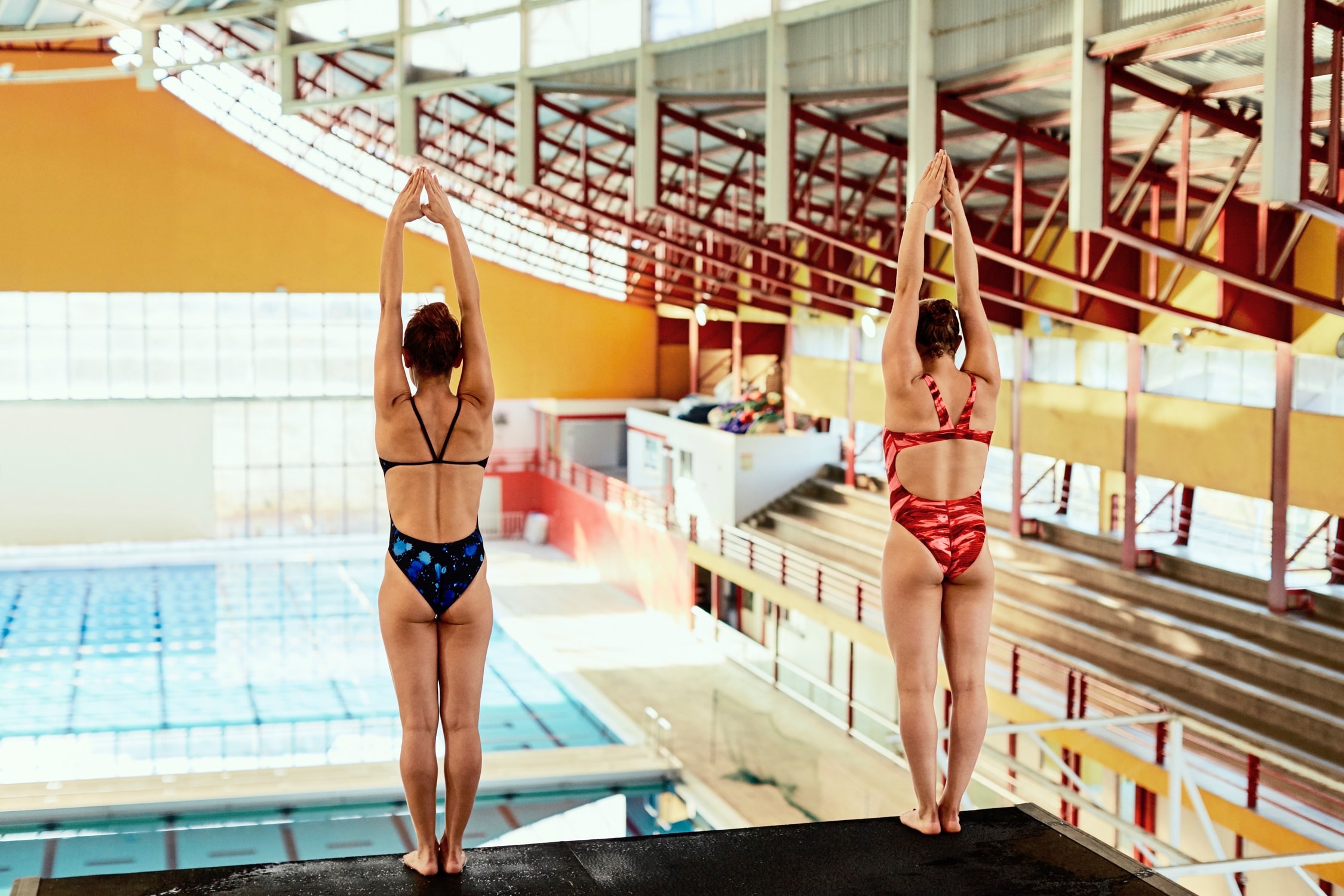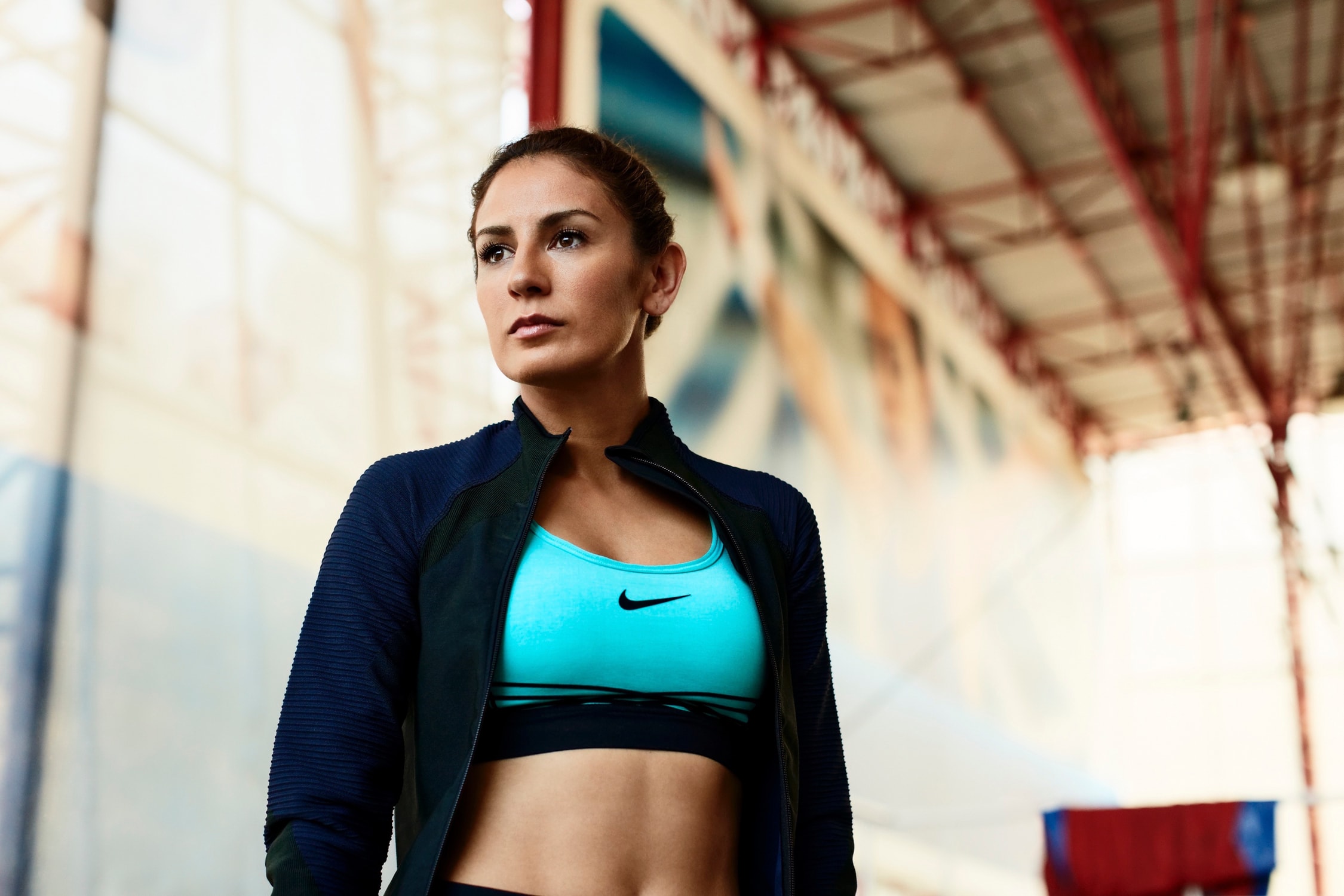On July 31, 2012 at the London Aquatics Center, Paola Espinosa and Alejandra Orozco step out of the poolside hot tub, towel off and scale three ladders to arrive atop the center’s ten-meter-high diving platform. Dressed in matching blue Team Mexico swimsuits, they silently repeat positive mantras: “Yes, you can.” “You can do it.”
The pair turns their backs to the pool, perching similar 5-feet-1-inch, 104-pound frames on the platform’s edge, gripping the brink with solely their toes. Each closes her eyes and draws a deep breath to slow her heartbeat, manufacturing a moment in which the slap of the pool drain and the cheers of the crowd disappear. They visualize their synchronicity, then Espinosa softly counts aloud: “One, two. One, two.” In unison, they spring into the air, twisting to the left before hinging at the hips, legs arrow straight to form a perfect pike as they begin their rapid descent.

Synchronized diving, which takes place from either a three-meter springboard or ten-meter platform, became an Olympic sport in 2000, although it had been publicly performed since the 1930s in diving shows and aquacades. In its competitive form, the contest features teams of two divers who perform simultaneous dives of five types: forward, backward, inward, reverse and twisting.
The elder of the pair, Espinosa was born in La Paz, Mexico, the capital city of Baja California Sur, in 1985. The firstborn daughter of two athletic parents, she was introduced to gymnastics at the age of three, then swimming, her father’s sport, but neither stuck. So at the age of five, she tried diving. “I was scared at first,” Espinosa recalls. “Then in my first competition at six, I got second place and I wanted to win. That’s where it all started.” A year later, she saw the Barcelona Games on TV and set her mind on winning a medal. At the age of 11, spurred by her family’s support and an invitation from the Mexican Olympic Committee to train in its program, Espinosa moved alone to Mexico City to pursue her dream.

The diver’s intense determination and focus, her mother Irma Josefina Sanchez Davila explains, was evident even before she was born. While pregnant with Espinosa, Davila recounts, doctors told her that she had a tumor that could cause either she or her daughter to die. Both survived, Davila says, because Paola is a fighter, and she believes this early trial developed her daughter’s inner strength.
Whatever the genesis of her resolve, following her arrival in Mexico City, Espinosa began defeating older competitors. Around this time, she also chose to focus on the 10-meter platform, rather than the springboard, because there were fewer females in the category. Eight years later, she was representing her country in Athens in the synchronized 10-meter platform event. Her first medal, a bronze, arrived in 2008 at the Beijing Games, an achievement that was both gratifying and motivating. “It made me want to practice more and more,” she explains. “I wanted to win more and to be the best.”
